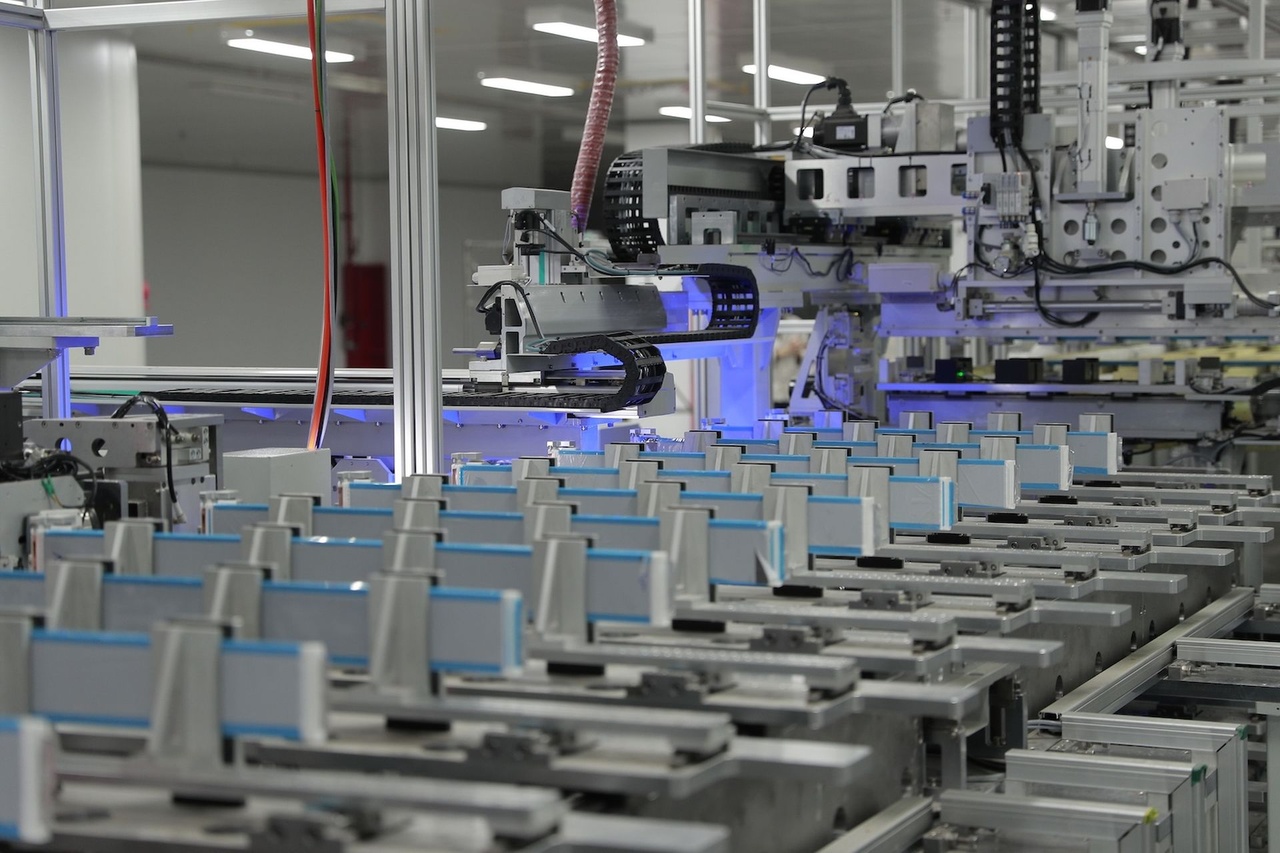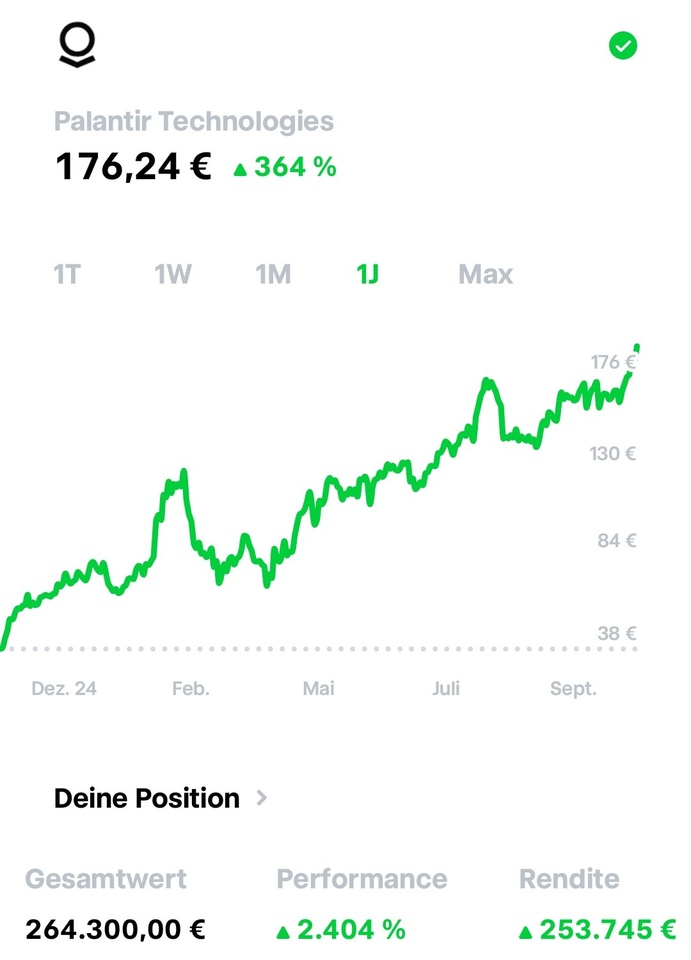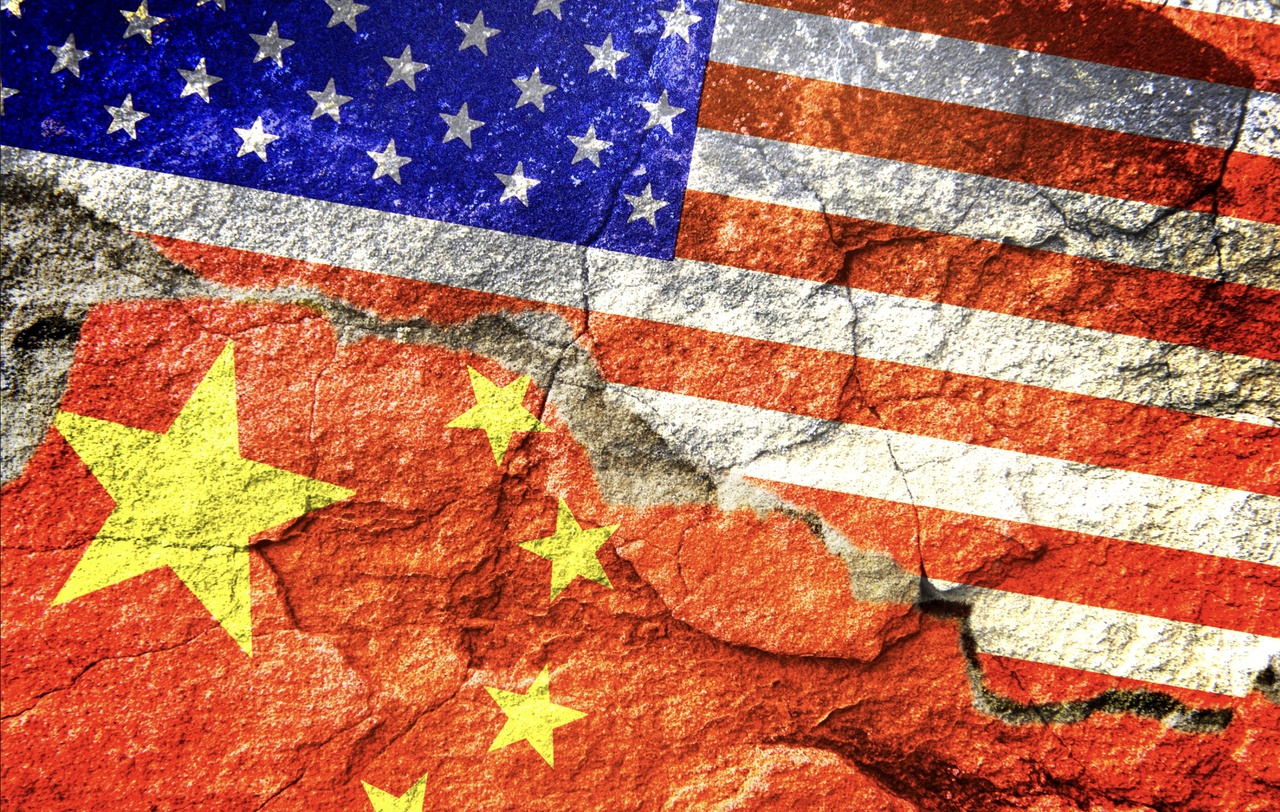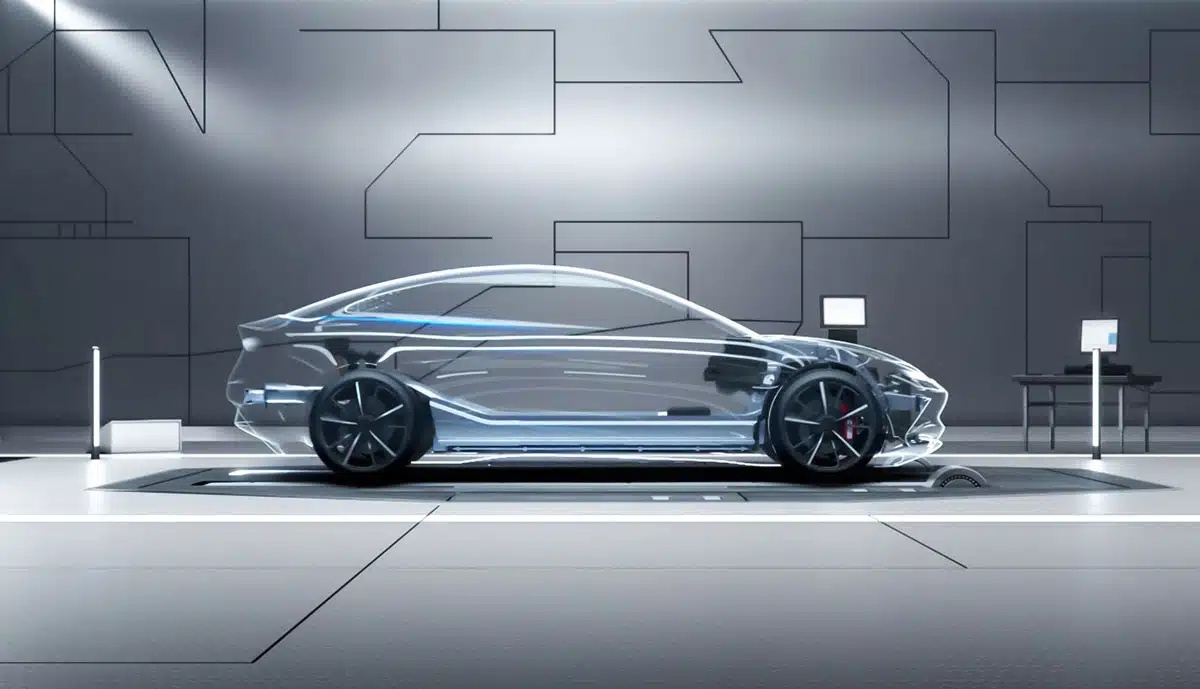When I picked up shares of $VOW (+1,13 %) 12X and $STLAM (+2,01 %) 118X , it wasn’t because the market looked rosy—in fact, the whole European car scene felt like it was limping through a cold spell. That slump made the prices look oddly inviting, like overlooked machines waiting for someone to believe they’d run again. I figured that if I was ever going to take a risk like this, it made sense to do it while I still have the time and energy to bounce back. So I clicked “buy,” half-nervous, half-excited, knowing the gamble was mine to grow into.

Volkswagen
Price
Discussion sur VOW
Postes
167BYD builds the world's largest car plant in Zhengzhou
In the meantime, BYD $1211 (+0,6 %) has not only become one of the largest car manufacturers in the world, but has also overtaken Tesla $TSLA (+0,26 %) as the largest producer of electric cars.
In the first three quarters, the Chinese company sold 1.6 million units, significantly more than Tesla with 1.2 million. BYD had already shocked competitor Volkswagen $VOW (+1,13 %)
$VOW3 (+1,45 %)when it overtook the Wolfsburg-based company as number one in China more than two years ago.
However, BYD is by no means concentrating solely on the domestic market - and has big plans in Europe in particular.
With 30 production sites worldwide, the company has secured a place on the prestigious Forbes Global 500 list.
The vehicles are already sold in 117 countries worldwide, but not in the USA. Vice President Stella Li explains: "This market is not interesting for us, and we are currently focusing so much on expansion in other regions that it would be difficult to allocate resources to this additional mission."
To date, the Chinese car manufacturer has only played a minor role in Europe, and has achieved little more than respectable success in its core market of Germany in particular.
However, this is hardly due to the vehicles, as affordable entry-level models such as the Dolphin Surf, the BYD Seal 6 mid-range estate or the powerful Yangwang U8 off-roader are more than competitive.
It's all about brand awareness and the dealer network - and a lot needs to happen here in the coming years in order to attack first the Asian and then the domestic brands.
BYD is not too fond of restraint. It comes as no great surprise that the company's own driver assistance system has been given the full-bodied name "God's Eye".
This name symbolizes an all-seeing, divine eye that observes everything and stands for divine wisdom, protection and surveillance - but also for a more than healthy self-confidence. One of the reasons for BYD's rapidly growing success is its particularly modern production facilities. In contrast to many of its competitors, the factories were meticulously planned on the drawing board and are as efficient as possible.
》New plants in Europe to lower prices《
It was only in June that the Chinese celebrated the millionth Seagull, a small electric car marketed in Germany as the Dolphin Surf, at the production plant in Xi'an.
While it costs around 20,000 euros in Germany, its retail price on the domestic market is just under 70,000 RMB - the equivalent of less than 8,500 euros, but it is also significantly less well equipped and designed in its home country.
BYD is currently building its own plant in Hungary in order to reduce prices in Europe and avoid customs duties. Further production facilities are being planned in Turkey and Spain in order to be able to exert pressure in Europe.
BYD's new flagship plant in Zhengzhou in Henan province in the central-eastern part of China sets standards that make every other gigafactory seem tiny.
The city with its 10.2 million inhabitants was chosen for this huge industrial complex due to its good road and rail connections and the skilled workforce in the region.
At 130 square kilometers, BYD's largest plant is the largest in the world and spans an area the size of San Francisco.
That's ten of the Tesla Gigafactories in Nevada with an annual production of two million vehicles. There are currently 60,000 employees here.
Wang Chuanfu, President and CEO of BYD, explains: "If technology is BYD's greatest strength, then design is the second." For this reason, a lot has been invested in the BYD Design Center, a 12,600 square meter center in Shenzhen, BYD's headquarters.
It forms the stylistic heart of the company and is responsible for the future design language of cars, trains and other means of transportation. Equally important is the team around Wolfgang Egger, a renowned German designer from Oberstdorf, who has already worked for and managed traditional European brands such as Audi, Lamborghini and Alfa Romeo.
As well as things are going in the Chinese market despite minor setbacks, there is still a lot to do in Europe. "We are still at the very beginning here," admits Stella Li and investments are currently being made in brand awareness and the dealer network.
In addition to local production, BYD has high hopes for its own fast-charging network, which will offer charging speeds of up to 1000 kW. This should not only benefit the company's own models, but also the premium offshoot Denza, which will be launching several models on the European market next year - first and foremost the flagship Denza Z9 GT.
》Flexible production for electric and hybrid drives《
In contrast to competitors such as Tesla or Polestar, BYD is not focusing solely on electric drives; vehicles with range extenders and hybrid technology should also make it easier for customers to switch to the up-and-coming manufacturer.
Production is therefore also flexible. In addition to purely electric vehicles, vehicles with combustion engines (DM-i / plug-in hybrids) and models from other manufacturers can also roll off the production line. According to BYD, 23 different models are possible per production line. The BYD models produced in Xi'an include the Seagull / Dolphin Surf, the Seal U series, the Qin EV, the SeaLion series, Tang L.
The platforms of the cars are crucial. The e-Platform 3.0 and the recently introduced Super e-Platform, which also enables extremely fast flash charging with a maximum of 1000 kW, allow this modular, efficient and fast production of various models.
Yang Buyi announces a degree of automation of 92.7 percent in the production line and points out how quickly BYD has reacted. "We converted production within just three months without any loss of quality and can now produce 250,000 units of the Seagull per year."
The plant is the beacon and backbone of BYD's global production network.
In Xi'an, BYD is driving forward vertical integration and produces almost 80 percent of the parts itself. BYD is taking the principle of vertical integration, i.e. producing as much as possible itself, to the extreme.
That is more than Tesla or German manufacturers.
This includes the batteries, including the cells and the overall system. The integration of the battery as a load-bearing element means that the body design and battery structure are closely interlinked. This also influences production, reduces complexity and therefore costs.
BYD is one of the few manufacturers with its own chip production and, in addition to the batteries, also produces the electric motors including power electronics and transmission, manufactures body parts, chassis components and also carries out the painting itself.
Stamped parts, structural parts and outer skin parts are manufactured in the company's own press shops. The same applies to wishbones, axle components and damper modules, which BYD also produces itself or via subsidiaries.
》FAZIT《
Even though BYD is currently under a bit of pressure, something big is rolling towards us, and not just in the mobility sector, so I am staying invested and expanding.



Five highly undervalued stocks from the DAX
With the current price/earnings ratio (P/E ratio), the DAX is overvalued by 25 percent compared to its 20-year average.
However, five of the 40 shares are valued more than 30 percent lower than their long-term average. The valuation discount is 51 percent for one share and as much as 73 percent for one share.
Handelsblatt presents these 5 stocks, the following is an excerpt from the article.
Vonovia $VNA (-0,18 %) : 33 percent valuation discount
Germany's largest housing group is growing again. In the past two years, Vonovia had not started any new construction projects due to the turnaround in interest rates and increased construction costs. Now 3000 new apartments are to be built and unrenovated properties purchased and renovated.
Analysts expect an average net profit of 2.15 billion euros for the year as a whole. The trend is pointing upwards: Six weeks ago it was just over two billion euros, twelve weeks ago it was 1.9 billion euros. Vonovia is forecasting the highest operating result in its history for 2026.
With a P/E ratio of 12.2 based on the profits expected by analysts over the next four quarters, the share is moderately valued and 33 percent lower than the long-term average.
VW $VOW (+1,13 %): 35 percent valuation discount
VW was in the red in the third quarter. After a profit of 1.56 billion euros in the same period of the previous year, the Group posted a billion-euro loss.
This was caused by charges of 7.5 billion euros, primarily due to increased customs duties, the adjustment of the product strategy at Porsche $P911 (+2,39 %) and write-downs on Porsche's goodwill.
By contrast, the long-weakening core brand Volkswagen improved. A comprehensive cost-cutting program also had an impact.
For the current full year, analysts are forecasting an average net profit of 6.5 billion euros after 11.35 billion euros last year. The trend is pointing steeply downwards, as three months ago the estimate was just under nine billion euros.
Taking this sharply lowered profit forecast into account, VW is nevertheless valued extremely low with a P/E ratio of just 4.4. This is a discount of 35 percent compared to the Group's own average. No other DAX stock is cheaper - with the exception of Porsche Holding, which belongs to VW.
FMC $FME (+0,24 %)
: 41 percent valuation discount
No company in the DAX is as dependent on the US market as the dialysis specialist Fresenius Medical Care (FMC). FMC generates around 70 percent of its sales in North America.
However, business on the most important continent for the healthcare specialist is - slightly - under pressure. The treatment figures of the blood purification specialist are merely stagnating.
In the third quarter, however, total sales rose by ten percent to 4.9 billion euros compared to the same period last year, exceeding market expectations by three percent. Currency-adjusted earnings before interest and taxes rose by 28 percent to 574 million euros. This also exceeded the company's expectations.
The rising profits at a share price that has only stagnated for six months mean that the valuation has fallen sharply. With a P/E ratio of 10.1 based on the profits forecast by analysts for the next four quarters, the share is valued 41% lower than the 20-year average.
Bayer $BAYN (-0,58 %) : 51 percent valuation discount
With a P/E ratio of only 5.6 based on the average net profits expected by analysts over the next four quarters, Bayer shares are valued lower than all other major pharmaceutical stocks in the western world. Compared to its own 20-year average, the discount is 51 percent.
The biggest construction site for the Group is a bad decision made ten years ago: the purchase of the controversial US seed and pesticide manufacturer Monsanto. Its weedkiller glyphosate is blamed by patients for their cancer and they are demanding billions in compensation.
The favorable valuation is based on the hope that profit expectations will be fulfilled and that no new write-downs in the billions will be made. However, this is just as uncertain as an end to the lawsuits. Success with new blockbusters in the pharmaceutical division is also by no means a foregone conclusion.
Zalando $ZAL (+0,76 %)
: 73 percent valuation discount
Anyone buying this DAX stock is paying a P/E ratio of 15.4, which is not cheap compared to the DAX, but the share is valued 73 percent lower than its own long-term average.
The share is currently trading more than 70 percent below its record high, although the company is expected to earn more in the current financial year than ever before. After a net profit of 251 million euros in the previous year, analysts are forecasting a good 290 million euros for the current year.
Source text (excerpt) & graphic: Handelsblatt, 07.11.2025


Palantir cracks 200$ and is at a new all-time high. I am now up a quarter of a million euros / 2,400% 📈🤑💰💶
Congratulations to all those who didn't listen to KGV beginners and stuck to their guns. I will continue to hold. Beginners who are blinded by the P/E ratio have stocks like Bayer and VW in their portfolios 📉. What percentage is Palantir up for you?

And yes: I have Bayer in my portfolio at a high loss. I got the shares from an estate and never sold them. Nor will I.
There are people who go for tech stocks. There are people who go for value. There are people who do something completely different. Everyone should be happy with their own approach.
Chip crisis at Volkswagen
Hello dear community
What is your assessment of the chip crisis at $VOW (+1,13 %) ? Could the dependence on China $IFX (+2,96 %) e.g. benefit from orders from VW and other German car manufacturers in the future, or is this rather unrealistic?
What do you think?
Have a nice weekend 🗡️💥
Incidentally, our last Economics Minister wanted to set up a semiconductor production site in eastern Germany with Infineon (and even with state aid).
Well, Porsche is now building 100% combustion engines again.
How attached we are to China without really realizing it... 🇨🇳🇪🇺
Rare earths, medicines and chips ... just to name 3 key areas. But most people in the forums are of the opinion that China is at least as dependent on us as we are on them... The example of Nexperia shows once again how far off the mark this is.
👉🏻 What happened?
The Dutch government has granted the Chinese owner Wingtech from controlling Nexperia last week
- officially due to security concerns and at the urging of the USA. The deposed Chinese CEO Zhang Xuezheng instructed employees in China to ignore orders from Europe while the Chinese government imposed export restrictions on Nexperia chips produced in China.
👉🏻 The potential consequences...dramatic
An acute chip shortage of so-called "chicken feed chips" in Germany and Europe. The chips produced by Nexperia are not highly complex and mass-produced, but Nexperia dominates this market virtually alone with a market share of just under 50%.
This is a huge problem for the automotive industry. Depending on the model, hundreds of these chips are installed in each car. But you can even find them in coffee machines etc. In other words, virtually everywhere that can be "controlled" in some way. So the problem is not just limited to the automotive industry, even if this is where it first appears.
Volkswagen has already announced short-time working for next week. The profitable models are now being prioritized, so the VW plants will be shut down first, but if a solution is not found soon, potentially Audi and Porsche as well. Mercedes, BMW and Bosch are also already warning of massive disruptions and once the supply chain is interrupted, it can take weeks or months to get it running smoothly again. The rat tail is simply enormous.
The production shock could be even greater than in corona times if no solution is found. This in turn could put thousands of jobs at risk. But it's interesting to see once again how little is being reported about this in the media (compared to the size of the problem - where is the chancellor?).
👉🏻 The solution - difficult...
Europe has no real leverage in my opinion and is caught between geopolitical tensions between the US and China. Do you piss off the US and release the company or do you stay the course and risk massive dislocation? Let's see...

Now we have the salad. And I'm not sure if it's bad enough for German industry, in cooperation with European politicians, to fundamentally improve its position. At the moment, all the news sounds like desperate attempts to get rid of the problems without changing anything.
The main thing is that pensions are safe...
The result does not sound good
Germany's key industries are increasingly doubting their own future viability. An Allensbach survey of 169 industrial companies commissioned by the restructuring consultancy FTI-Andersch shows corresponding warning signs.
The results, which are considered representative, are available exclusively to Handelsblatt.
The most important findings of the survey:
- 51 percent of the companies surveyed fear that their business will continue to stagnate or even deteriorate over the next twelve months.
- 60 percent of domestic automotive suppliers have given up on winning Chinese car manufacturers as customers, even though they are becoming increasingly important.
- 51 percent of mechanical engineering companies assume that they will lose their technology leadership to foreign competitors in the coming years.
- And 94 percent of energy-intensive companies, such as those in the chemical and steel industries, fear that there will be an exodus from Germany in their sector.
Deindustrialization in Germany is intensifying
The signs of deindustrialization are intensifying: German industry has reduced its workforce by almost four percent compared to the pre-corona year 2019, according to analyses by the consultancy EY based on figures from the Federal Statistical Office.
Confidence is also waning among young entrepreneurs. In the current Future Barometer of the Wirtschaftsjunioren Deutschland, 77.3% of respondents stated that they were pessimistic about the next two years. A year ago, this figure was 73.1 percent.
The German automotive industry is losing importance. In recent years, Volkswagen $VOW (+1,13 %) BMW $BMW (+3,77 %) and Mercedes $MBG (+2,05 %) have sold fewer vehicles in all key regions of the world, even though the markets are growing. Chinese competitors in particular, such as BYD $1211 (+0,6 %) or Xiaomi $1810 (+2,26 %) are winning.
Domestic machine manufacturers are facing a historic break. 51% assume that technology leadership will no longer be in Germany in the future, but abroad. 70 percent therefore fear a strong or very strong impact. "The fact that the majority of mechanical engineering companies no longer believe in their global leadership role is worrying," says FTI-Andersch CEO Säuberlich.
Almost all companies in energy-intensive sectors such as the chemical or steel industry consider it likely or very likely that companies in their sector will move away from Germany either completely or partially. The main reason for this is the high energy prices.
Source text (excerpt) & graphic: Handelsblatt, 17.10.2025

Now things will continue to go downhill for a few more years. The way back up will be tough. But that's how the Germans are: things have to get really bad for them to move. And we're still a long way from really bad. 🤷
How CATL wants to dominate the global battery replacement market
CATL $3750 (+2,07 %)the world's largest battery manufacturer, is betting big on battery swapping as the next challenge in electric vehicle infrastructure, challenging the leadership position of carmaker Nio and reviving a concept once rejected by Tesla.
At a demonstration in Shanghai last week, the Ningde-based company showed how its "Choco Swap" stations can automatically swap out a dead battery in 70 to 80 seconds, with official specifications calling for a 99.99% success rate.
In contrast, a battery change on Nio's latest fourth-generation stations usually takes around three minutes.
With pilot trials of the fifth-generation stations due to begin in December, the company is expected to further reduce swap times, continuing the trend seen with each new generation.
CATL's strategy is based on standardized, universal battery packs that are suitable for different brands and vehicle classes.
The first two product families, launched last December, include 42 kWh and 56 kWh lithium iron phosphate (LFP) packs and 52 kWh and 70 kWh nickel cobalt manganese (NCM) packs with a range of 400 to 600 km.
The batteries are modular and can be rented, exchanged or upgraded so that car buyers can purchase a vehicle without a battery, reducing the purchase costs by up to a third.
The stations store 14 batteries depending on the configuration and are compatible with vehicles with a wheelbase of 2.55 m to 3.10 m - from compact saloons to larger mid-size cars.
In future generations, CATL is aiming to store 30 batteries in each station.
Each system also integrates charging functions and is designed to enable battery-to-grid services, so that energy can be stored and redistributed at times of low demand.
CATL has already installed more than 500 exchange stations in 34 Chinese cities, 105 of which were installed in August alone.
The company is targeting 1,000 stations by the end of this year, another 2,500 in 2026 and more than 2,000 new stations in 2027, covering more than 100 cities.
By comparison, Nio opened its first station at the beginning of 2018 and has since built around 3,500 stations in seven and a half years.
The battery manufacturer is aiming for a network so dense that a station is available every 3 to 5 km in urban areas, with each station able to handle 500 to 700 changes per day once private vehicles are added to the current taxi-focused operations.
The roll-out was deliberately fast. CATL says it can select, approve and build a new station within a month, although the process is expected to take longer in overseas markets - particularly in Europe.
Unlike Nio $9866 (+0 %)which initially built a network around its own vehicles, CATL is working with multiple car manufacturers from the outset to ensure wider compatibility.
The first Choco Swap-enabled models are expected to hit the market from 2025, including the Aion S sedan from GAC, the E-QM5 from Hongqi and the Roewe D7 from SAIC.
Further vehicles from BAIC, Chang'an, Wuling and SAIC's Rising brand are expected from 2026.
Nio, which pioneered this technology in China, operates more than 3,500 exchange stations in its home market and 61 in Europe, mainly in Germany and Norway.
The fifth-generation stations, scheduled to go into operation in 2026, will increase storage capacity beyond the current 23 batteries per site, a spokesperson for the EV battery swap division said.
However, expansion in Europe has slowed: earlier this year, Nio Power's team on the continent was reduced to just five employees, delaying further rollout.
The company has deepened its relationship with CATL, agreeing to a 2.5 billion yuan (US$345 million) investment in Nio Power from the battery company in March.
The two companies are also supporting Weilan, a battery start-up whose share capital tripled in May, as part of a joint research and development initiative.
CATL has said it will eventually launch the system in Europe, but executives said last week that the focus remains on China for now as there are "many challenges" overseas.
Vice president Jiang Li told the Financial Times earlier this year that the business model could be "copied" overseas once the domestic rollout is mature.
The company's relationships with Ford $F (-0,71 %), Tesla $TSLA (+0,26 %), BMW $BMW (+3,77 %), Volkswagen $VOW (+1,13 %) and Stellantis - all current customers of CATL batteries - could pave the way.
Stellantis $STLAM (+2,01 %)which is building a €4.1 billion battery factory in Spain in partnership with CATL, has already started testing Fiat 500e vehicles with swappable batteries in Madrid through its Free2move mobility service, using technology from Californian start-up Ample.
For CATL, battery swapping offers both a hedge against slowing growth in demand for EV batteries and an opportunity to enter the consumer-facing infrastructure.

Unfortunately, it will remain a dream for a very long time to come.
Vehicle manufacturers use various different types of batteries. Be it the chemical composition, the design or the performance.
Therefore, a standardized system will unfortunately not work for at least the next 10 years.
Car industry under pressure - VW share in focus!
$VOW (+1,13 %) in the acid test: Plant breaks, weak demand for e-cars, pressure on margins - and a possible share price trigger.
Find out more in the video analysis:
- Fair valuation
- Price targets
- Current newsflow
- Car summit on 08.10.25
On the road to financial freedom - September update 📊
I've only been on this platform for two weeks, but at the end of the month there will be the first monthly update on the portfolio ... 😉
Start: 1,022,339 euros
End: 1,116,452 euros
Deposit: 41,000 euros
Profit:
+ 53,113 euros (+5.2%)
This month was quite a decent month in terms of the equity portfolio. The portfolio performance was driven primarily by gold stocks ($KNT (+3,73 %)
$EQX (-0,17 %) ). The gold price explosion, as I like to call it, is of course benefiting here. I assume that gold will continue to perform strongly and provide support for mining stocks. 📈
The automotive stocks in the portfolio have performed less well ($PAH3 (+1,39 %)
$P911 (+2,39 %)
$VOW (+1,13 %) ). This was due to the profit warnings from Porsche and subsequently VW. Nevertheless, I remain optimistic and consider them undervalued at this level despite the difficult situation. 📉
Otherwise, I received around 1,000 euros in dividends this month and realized around 4,000 euros in gains on Alibaba and Baidu, among others. 💵
➡️🆓: On my way towards 4 million total assets, the target achievement level is now 39%. 😊
Let's see how October turns out. As always, it remains exciting!
Titres populaires
Meilleurs créateurs cette semaine











